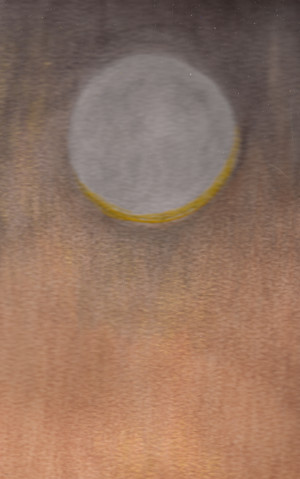|
ASTROLOGY
Astrology is a study of self and how we are
each aligned to the astrological seasons and the universe. The
science of astrology is centered on our personality traits which
were derived from the date and time of our birth and can be
considered our personal timestamp.
The art of astrological
forecasting was in use long before the
Bible was compiled. It has its roots in Mesopotamia.
Astrology is based on the zodiac and is the study of cycles.

DaVinci 'Glow' on Moon |
Astrology is not fortune telling but instead,
a tool to help each of us understand our personal issues,
fears and dreams and help us to live our highest potential.
 |
Astrology: The use of the position of the
planets and stars to interpret personality.
|
 |
Zodiac: An area of the sky that is divided into 12
sections each associated with a constellation.
|
 |
Horoscope: Charts and maps based on your
rising sign that are a tool used to show the relative
position of planets to predict events. |
Astrological systems
There are two main astrological systems
in use today:
 |
Vedic (Sidereal): Uses precession of the
earth's axis and emphasizes sun and moon signs.
|
 |
Western (Tropical): Aligns with the
earth's seasons and is influenced by the sun. Western
astrologers use this system.
|
There are also several other zodiac systems
in use around the world including Celtic tree, Chinese, Egyptian and Native American.
Eastern and western
Both Vedic and Tropical zodiacs are the same
in many ways since they have 12 astrological signs and
represent the four elements. Additionally, both have cardinal,
mutable and fixed attributes that are the same for each sign.
Before the discovery in the last 100 years or
so of Uranus, Neptune, Pluto and Chiron, both systems were
more closely aligned.
Babylonians
Centuries before Ptolomy, the Babylonians were
the first to create a zodiac tied to 12 constellations and a
calendar with 12 months based on the moon. They knew about the
13th constellation,
Ophiuchus, however, they and did not include
Ophiuchus in their zodiac.
Tropical is simpler method than Vedic
Ptolemy introduced a simplified method of
calclating the movements of the planets around 285 BCE. By
noting the precise times of the equnoxes and solstices, and
realizing that each planet moved in a fixed rate relative to
the Sun, he was able to derive the positions of all the
planets.
From there, Ptolemy conceived the tropical
method by calculating planetary positions based on the Sun's
movement from the equator to the tropics.
Sidereal connects with the astral (the stars)
and Tropical (Western) astrology connects to the Sun and the
Earth perception (seasons). This shows that Tropical astrology
is not astrology because it's not connected to the stars so it
is instead planetary influences (which is not a bad thing).
Sidereal is looking at the Heavens and Tropical is looking at
the Earth.
1st degree in Aries
The difference between the two zodiacs is the
starting point for the 1st degree in Aries in spring.
In tropical zodiac, the 1st degree occurs with
the Vernol equinox (or March 21st) and each of the four
seasons line up with the Sun passing in the cardinal signs;
 |
Aries (spring - March 21)
|
 |
Cancer (summer - June 21)
|
 |
Libra (autumn - September 21) |
 |
Capricorn (winter - December 21) |
It is clear that the tropical zodiac is
based on the Sun/Earth relationship in each season.
Sidereal zodiac is observable
phenomenom
In Vedic (sidereal) astrology, the 1st degree
of Aries is marked when the Sun passes through the observable
fixed stars of the constellation Aries. Sidereal (sider means
'star') is based on the position of the planets to the stars
in the constellations as recognized by modern astronomy.
Classical sign rulerships
 |
Mars rules Aries and Scorpio
|
 |
Venus rules Taurus and Libra
|
 |
Mercury rules Gemini and Virgo |
 |
Moon rules Cancer |
 |
Sun rules Leo |
 |
Jupiter rules Sagittarius and Pisces |
 |
Saturn rules Capricorn and Aquarius |
Great year
On earth, each month is represented by a
zodiac sign and in the heavens, each season of life is
determined by the placements of the zodiac constellations.
There are 12 months and also 12 astrological ages in the
heavens which take a total of 25,925 years (aka Great Year) to
accomplish. Each of the 12 individual ages are 2,160 years
long although some speculate they are more flexible and last
from 2,000 to 2,400 years.
There is NO place in the Bible that says you can't
use astrology. (Justin Sledge, Esoterica)
|
Currently we are leaving the Age of Pisces and
entering the Age of Aquarius.
2 degree Ophiuchus conjunct with Scorpio where the
stinger of Scorpio comes up into the zodiac belt and
the foot of Ophiuchus comes down and gets stung by the
scorpion!
|
|

